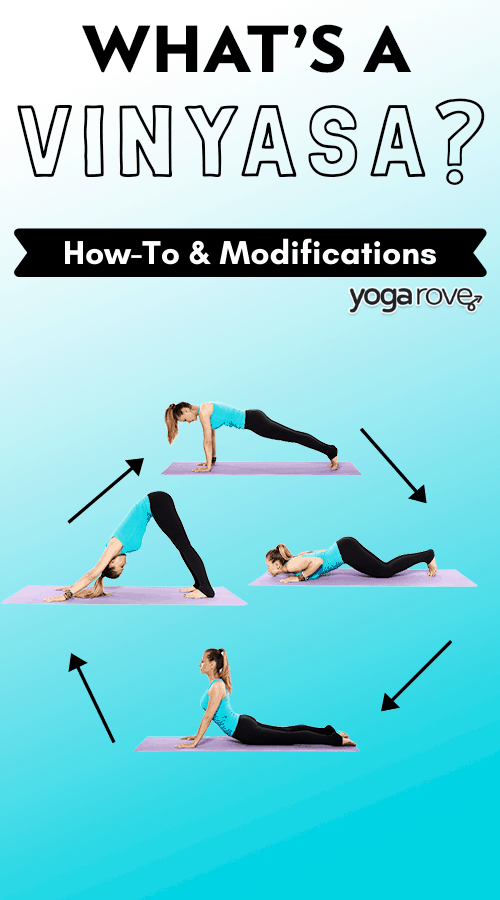
Many people have musculoskeletal injuries when practicing yoga. Although wrist-weighted positions pose a high chance of injury, there is some way to reduce this risk. Incorrect wrist alignment can result in sprains and even breaks. These exercises require that the wrist and fingers be held firmly and evenly. Avoid these injuries by using safe postures and adhering to instructions.
According to researchers, yoga is seeing an increase in injuries. The number of injuries has increased from 13 in 2000 to twenty in 2001, and from eight to 46 in 2002. The Consumer Product Safety Commission uses sampling to determine the true picture. A small number of yoga injury victims go to emergency rooms. Most seek treatment from family doctors, chiropractors, or massage therapists. While yoga may be an effective way to prevent injuries, it is important to understand the limitations of research.
Improper alignment is often the cause of injuries in yoga. If you're not able to align yourself properly, you may be placing yourself at risk of an injury. An injury-free yoga practice will be avoided by proper alignment. A teacher who has been properly trained in biomechanics should be a must. For a class to be safe and effective, it is essential that you have the right body mechanics. You run the risk of getting injured if your instructor isn't familiar with the right technique.

Rotator Cuff and shoulder muscles are vulnerable to injury. Also, rotator-cuff injuries can occur when the wrists and hands are twisted in certain poses. Furthermore, the sun salutations are a series of poses that puts the body's weight on the upper extremity and are often associated with an impingement of the rotator cuff. These positions can be particularly dangerous when you are doing a lot of forward bending and stretching your hamstrings.
There are several common types of injuries in yoga. Most common injuries are those involving muscles and joints. They are not life-threatening, and most are mild and will not require medical attention. Yoga poses are great for anyone with a health problem. Overexertion can cause damage to the shoulder and rotator cuff, which are delicate muscles. Therefore, you should pay special attention to your rotator cuff and make sure that it is functioning properly.
While you should avoid doing any dangerous yoga poses, there are some common injuries that occur. The most common one is text neck. It's caused by too long use of a phone. Avoiding these positions can help prevent injury to the neck muscles. Your practice will benefit you more the more you do it. Although injuries to yoga can be caused by many factors, most of them are avoidable.
The low back injury is a common one in yoga. A low back injury could be caused by overly curving or twisting joints. If you have suffered from an injury in the past, this condition can occur by doing certain poses that are not properly aligned. Overworking the shoulder can cause injury to yoga. The clavicle and humerus can be injured in the upper extremities.

The most common types of yoga injuries are caused by improper technique. A yoga injury can be caused when the neck, hips or other joints are overstrained. An orthopedist may recommend that you pay attention to your body and refrain from taking on any positions that are too difficult. Exercising too often can cause neck strain. It takes time to heal a neck injury, so avoid doing more intense yoga exercises. This will prevent further complications.
While the incidence of yoga-related injuries is low, it is important to know that certain postures can cause pain, which can be painful. These types of injuries rarely occur. These injuries can be caused by repetitive strain or overstretching. Injuries in yoga are most common when performed incorrectly or without proper warming up. Practitioners who are not fully aware of the risks associated to the poses can inflict injuries.
FAQ
Why Metabolic Well-being is the Key to Aging Well
People are living longer lives today than at any point in history. However, as they age, so do their chances of getting sicker. Despite making great progress in medical science, it is becoming more apparent that our current approach to medicine is not working.
It's time to change our perceptions of health and aging. We have to start looking at metabolic health - not just weight loss but overall wellness - as the key to healthy aging.
If you want to live a healthy, active lifestyle for the rest of your life, it is important to maintain a strong metabolism throughout your entire life.
The good news is that there are many ways to improve your metabolic health. You can improve your metabolic health by incorporating these 7 foods in to your diet.
-
Resveratrol is a component of blueberries that has been proven to improve cellular longevity. They also contain vitamins C & E, as well as antioxidants.
-
Lentils and pinto beans, which are legumes, provide great fiber and plant-based sources of protein. These nutrients help maintain blood sugar levels so they don’t spike and fall.
-
Broccoli is rich in sulforaphane. Studies have shown that it protects cells from DNA damage. It may even slow down cancer growth.
-
Chia Seeds have high levels of omega-3 fatty oils and fiber. They are high in protein and antioxidants. All of these nutrients help promote heart health, brain function, and gut health.
-
Green Tea contains polyphenols called catechins. Green tea's catechins have been linked with reduced bone fractures as well as cardiovascular disease, cognitive decline, dementia, and increased diabetes risk.
-
Salmonis a great source of lean protein. It is low in saturated fat and high in vitamin D.
-
Walnuts have omega-3s and antioxidants such as alphalipoic acid (ALA). ALA boosts energy production and reduces inflammation.
Do Men Need A Gym Membership?
Men do not need a gym membership. If you sign up for a gym, however, your money will be much more valuable.
Most gyms offer free trial memberships, allowing you to try out the facilities before paying any fees.
You can use the gym at any time you want, and it doesn't cost anything. You can cancel your membership as soon as you decide whether you love or hate it.
What does milk do to men?
Think about other uses for milk next time you purchase it. It might also help if you start drinking less coffee.
It has been proven that milk is beneficial for both children and adults. Milk is rich in nutrients for children, including vitamin D and calcium.
It also aids digestion, improves bone strength, and promotes weight gain. Milk products can help adults have better immunity systems and less illness.
Also, milk is rich in lactose so people who can't digest this sugar well can still reap the benefits of it without any stomach issues.
Consider drinking more milk, instead of sodas or juices. Drinking milk with more calcium and vitamin A can help to strengthen your teeth.
Plain low-fat yogurt is another option if milk tastes bland to you. Yogurt can be a great substitute for milk, as it has fewer calories and more protein.
Probiotics are also found in yogurt, which help with digestion and boost immunity.
A glass of warm milk is a great way to get a good night's sleep if you're having trouble getting to sleep. Warm milk relaxes the muscles and increases serotonin levels. It will give you a restful night.
How to build muscles quickly
To build muscle quickly, eat healthy foods and exercise regularly.
The best time to work out is early morning when you are fresh and ready for action!
Exercises such as push-ups and bench presses are good options.
Use different weight training techniques and drink plenty water throughout the day.
Eggs good for men
All the nutrients that the body needs are found in eggs. It is also good for maintaining strong bones, healthy heart and lungs, as well as stable blood pressure.
Eggs are rich in protein, vitamin A, B12 and D,E,K, as well as vitamins A,B12 and D,E,K, calcium, iron, phosphorus, manganese, copper, magnesium, and riboflavin.
Egg yolks are high in cholesterol. However, it doesn't contain saturated fat. Eggs have less saturated fat than many other foods.
They are also low in calories and sodium. Because they can be cooked in almost any way that you wish, they are versatile. You can cook them in many ways, including poaching, boiling, hard-boiling, baking, and scramble.
They are extremely nutritious and simple to prepare.
At least two whole eggs should be consumed each day. You don't have to eat eggs.
Essential nutrients are found in eggs. You can add eggs to your daily diet now.
Statistics
- 10 pounds in a month is likely during a lean bulking phase, especially for beginners. (muscleandstrength.com)
- Candidates and applicants must pass all four tests at 70% (minimum level) to graduate from Basic Deputy U.S. Marshal (BDUSM) Training. (usmarshals.gov)
- An estimated calorie range for moderately active adult males falls between 2,200 to 2,800 calories per day, depending on age. (eatright.org)
- Are You One of the 20% of Guys (mh.co.za)
- According to the American Academy of Dermatology (AAD), men over 50 are at a heightened risk of developing it. (healthline.com)
External Links
How To
How can I exercise to burn fat?
Exercise burns calories through increased metabolism and oxygen consumption.
Moderate intensity exercise is a safe way to lose weight.
These are the top tips for burning fat while you exercise.
-
Cardio exercises can include running, walking, swimming or cycling.
-
Do 30 minutes of exercise three times a week.
-
If you want to lose more weight, add strength training to your routine.
-
Avoid intense workouts. You can build muscle without having to lose muscle tissue.
-
When exercising, make sure to drink lots of water. Water flushes out toxins, and keeps your body properly hydrated.
-
After exercising, you should drink low-fat protein drinks. Protein shakes are great for your muscles and energy.
-
Eat smaller meals throughout the day, so you don't feel hungry between meals.
-
Don't skip breakfast! Skipping breakfast can cause you to feel tired and sluggish.
-
Mental health is important. Stressful situations can slow metabolism.
-
Keep a positive attitude. Studies show that overweight people are more likely to be obese than those who perceive themselves as attractive.
-
Get enough sleep. A lack of sleep makes it difficult to lose fat.
-
Keep active. Move around at least once an hour.
-
Maintain a healthy diet. Eating right keeps you feeling full and satisfied longer.
-
Find relaxation methods. Tenseness can cause stress hormones to break down muscle tissue.
A balanced diet will provide all nutrients that are necessary for growth.
Instead of eating three large meals a day, eat six smaller meals every day. This allows your body time to digest what you've eaten.
You need about 500 milligrams of calcium daily to maintain strong bones. Calcium can also be found in milk products, yogurt, fortified Soy beverages, orange Juice, cereals and bread.
Calcium comes from leafy green vegetables, beans, tofu, nuts, seeds, and cheese.
Your body needs vitamin D to absorb calcium. Vitamin D is found in certain fortified foods, such as egg yolk and fatty fish.
Vitamin E is crucial for skin health. It can be found as a vegetable oil, wheat germ, peanuts or almonds.
Your body needs zinc to maintain normal immune function and heal wounds. Zinc can be found as a mineral in oysters.
Zinc deficiencies can lead to fatigue, decreased appetite, depression, and reduced immunity.
Sugar intake can lead to insulin resistance which causes blood glucose levels to rise. Insulin resistance is linked to weight gain.
Insulin resistance develops when there are high levels of free radicals in the bloodstream. Free radicals are molecules containing unpaired electrons which cause damage to cells membranes.
Food additives, pesticides and herbicides, as well as preservatives, smoking and radiation are all sources of free radicals.
Free radical damage may lead to cancer, heart disease diabetes, arthritis, asthma and other conditions.
To prevent free radical damage, eat a healthy diet rich in antioxidants. Antioxidants protect against oxidative damage.
Vitamin C (found on citrus fruits), Beta carotene, found in carrots and sweet potatoes, spinach and broccoli, cantaloupe (found in tomatoes, mangoes and peppers), and Vitamin E (found nuts, olive oil and avocados).
Additional antioxidant nutrients include selenium and copper, manganese and zinc.
Selenium is known to protect cells from the oxidative damage that free radicals can cause. Selenium can also be found in Brazil nuts (tuna), liver, kidneys and shrimp.
Copper protects the eyes, brain, lungs, liver, and red blood cells. Copper is also found in poultry, meat, and organs.
Manganese forms an essential part of bone structure. Manganese can also be found in oatmeal, brown rice, spinach and bananas.
Zinc is necessary for average growth, reproduction, and wound healing. Zn can also be found in white fish, lean cuts of meat, poultry, and eggs.